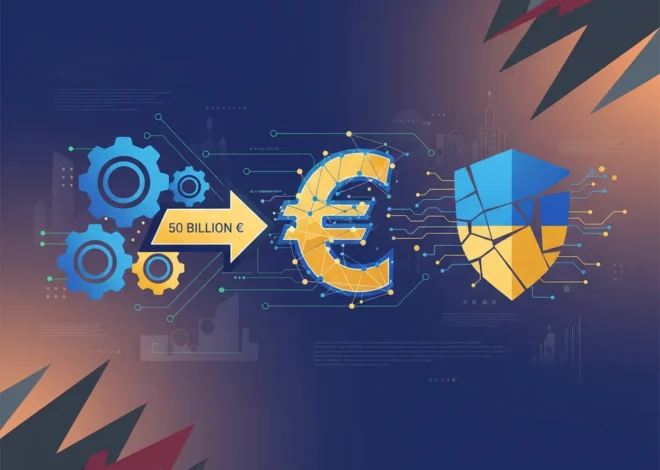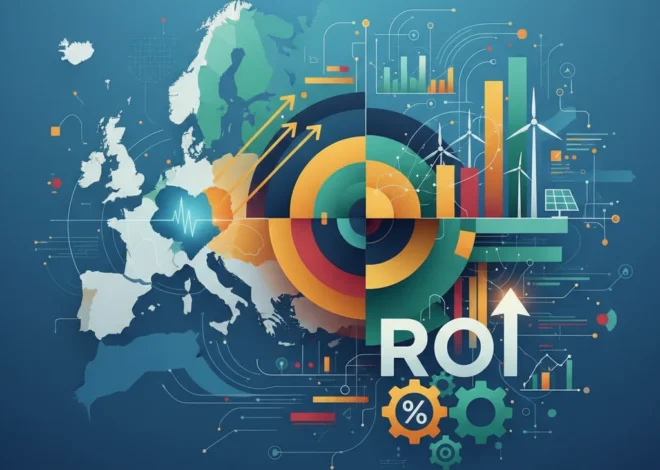
Beyond the Rubble: The Financial Architecture of Gaza’s Post-War Future
In the world of international relations and finance, the end of a conflict is not an endpoint, but the beginning of a monumental challenge: reconstruction. The Gaza Strip, a region scarred by recent hostilities, now stands at a critical juncture. While headlines have focused on the humanitarian crisis, a quieter but equally crucial conversation is taking place—one centered on economics, finance, and the sophisticated architecture required to rebuild a shattered economy. At the heart of this emerging strategy is the US-backed Gaza Humanitarian Foundation (GHF), an organization positioning itself to play a pivotal role in what could become a new paradigm for post-conflict recovery.
For investors, finance professionals, and business leaders, the situation in Gaza is more than a distant geopolitical event. It is a real-time case study in risk management, nation-building, and the deployment of capital in the most challenging environments imaginable. The success or failure of this endeavor will have ripple effects on regional stability, international policy, and the global economy. This isn’t just about aid; it’s about pioneering a sustainable economic future from the ground up.
The Unprecedented Economic Challenge
To grasp the scale of the task, one must understand the depth of the economic devastation. The war has not just damaged infrastructure; it has obliterated the foundational elements of a functioning economy. Businesses, banking systems, and supply chains have been decimated. The World Bank and the UN estimated in a recent report that the direct cost of damage to critical infrastructure in Gaza was around $18.5 billion in the first four months of the conflict alone. This figure, staggering as it is, only scratches the surface. It doesn’t account for the lost productivity, the collapse of human capital, or the complete paralysis of trade and commerce.
Rebuilding Gaza is not a matter of simply wiring funds. It requires a sophisticated approach to finance, a robust banking infrastructure to manage capital flows, and innovative economic policies to spark growth. The traditional models of humanitarian aid, while essential for immediate relief, are insufficient for the long-term work of economic reconstruction. This is the void the Gaza Humanitarian Foundation, in talks with US and Israeli officials, aims to fill.
Erdoğan's Economic Experiment: Inside Turkey's High-Stakes Financial Gamble
A New Blueprint for Reconstruction: The GHF’s Proposed Role
The GHF’s vision represents a potential shift from short-term relief to long-term economic stewardship. According to reports, the foundation is being positioned to operate as a key intermediary, managing and distributing international funds for reconstruction projects. This model is designed to address critical concerns from all sides: for international donors, it offers a mechanism for oversight and accountability; for Israel, it provides security assurances that funds are not diverted; and for Palestinians, it offers a pathway to rebuilding their lives and livelihoods.
The financial mechanics of this operation would be complex. It would involve:
- International Fund Management: Acting as a central repository for aid from governments and international bodies, requiring sophisticated treasury and finance operations.
- Project Vetting and Financing: Establishing criteria for funding projects, from large-scale infrastructure to small business grants, essentially acting as a development bank for the region.
- Supply Chain Logistics: Managing the procurement and delivery of materials into Gaza, a process fraught with logistical and security challenges.
This is where the principles of modern finance and economics become paramount. The GHF would need to implement rigorous financial controls, transparent reporting, and performance metrics to maintain the confidence of its international backers. The ultimate goal is not just to rebuild, but to foster a self-sustaining economy that can attract future private investing.
Leveraging Financial Technology for Transparency and Efficiency
One of the most promising aspects of a modern reconstruction effort is the potential to leverage financial technology (fintech) to overcome historical challenges. In post-conflict zones, corruption and the misdirection of funds are persistent problems that erode donor confidence and cripple recovery.
Here’s how fintech could revolutionize the process:
- Digital Payments and Mobile Banking: With the traditional banking infrastructure in ruins, mobile banking platforms can provide a lifeline. Distributing aid directly to individuals’ digital wallets can ensure funds reach their intended recipients quickly and securely, bypassing intermediaries.
- Blockchain for Supply Chain Transparency: For a technology often associated with speculative trading, blockchain could find a powerful humanitarian use case here. A distributed ledger could be used to track every dollar from a donor agency to a specific project or supplier, creating an immutable record of transactions. This level of transparency could be a game-changer for accountability.
- Insurtech for Risk Management: As private sector involvement grows, innovative insurance products could help de-risk investments in a volatile environment, encouraging businesses to re-enter the market.
The integration of such financial technology would not only improve efficiency but would also generate invaluable data on the local economy, helping policymakers and economists make better decisions as the recovery progresses.
Beyond the Boardroom: Sweden's Blueprint for Investor Power in the Digital Age
To better understand the key players and their prospective roles in this financial ecosystem, consider the following breakdown:
| Stakeholder | Primary Role & Financial Interest |
|---|---|
| Gaza Humanitarian Foundation (GHF) | Central fund manager, project oversight, and financial intermediary. Interest is in operational success and long-term viability. |
| United States Government | Primary financial backer and political facilitator. Interest is in regional stability and effective use of taxpayer funds. |
| Israeli Government | Security oversight and logistical control of borders. Interest is in ensuring funds are not used for militant activities. |
| International Donors (e.g., EU, World Bank) | Provide capital for reconstruction. Interest is in transparent, impactful deployment of funds and humanitarian outcomes. |
| Private Sector Investors | Future source of capital for business development. Interest is in long-term profitability, contingent on stability and a clear legal/economic framework. |
The Ripple Effect on Global Markets and the Economy
While the focus is on Gaza, the implications of this reconstruction effort extend far beyond its borders. The stability of the Middle East is intrinsically linked to the global economy, primarily through energy markets and major shipping lanes. A successful, well-managed reconstruction of Gaza could contribute to de-escalating regional tensions. For the global markets, this matters immensely.
Prolonged instability in the region often translates to volatility in oil prices, which directly impacts inflation and corporate earnings worldwide. Investors in the stock market, whether they are engaged in active trading or long-term holds, are indirectly exposed to this geopolitical risk. A stabilization of the region, however gradual, could introduce a “peace dividend,” boosting investor confidence and potentially benefiting markets from Tel Aviv to New York. The coordination between US and Israeli officials on this financial plan underscores the high stakes involved for the international economic order.
Geopolitical Tremors: What US Military Threats in Venezuela Mean for Global Markets
The Road Ahead: Investing in a Sustainable Future
The path to rebuilding Gaza is long and fraught with peril. However, the emerging strategy centered around the Gaza Humanitarian Foundation offers a glimpse of a new, more sophisticated approach to post-conflict recovery. It is a model that places the principles of modern finance, accountability, and technology at its core.
For the financial world, this is a moment to watch closely. It is a test of whether innovative financial mechanisms and strategic investing can succeed where traditional methods have fallen short. The reconstruction of Gaza is ultimately a long-term investment in peace and stability. The returns, if realized, will not be measured merely in dollars, but in the creation of a viable economy and a more secure future for the entire region.


